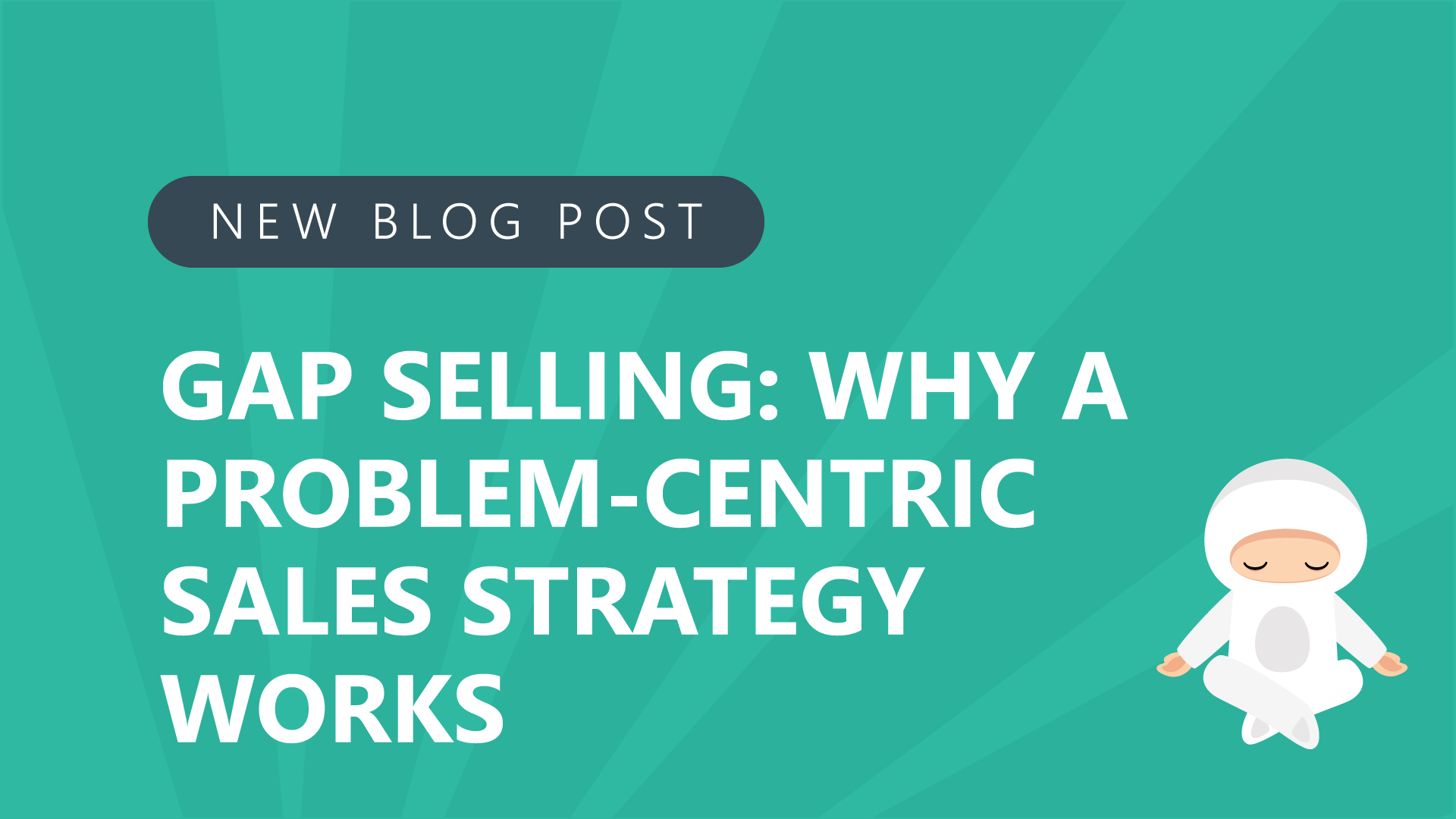Are you familiar with the concept of gap selling? At its very core, it’s a problem-centric sales approach. Instead of being pushy with a product, a salesperson focuses on learning the desired outcome an organization wants to achieve in the negotiation process.
Keenan—author of the book Gap Selling: Getting the Customer to Yes—is the special guest on episode 139 of Negotiations Ninja. In the episode, he talks about gap selling and its effectiveness. Keenan claims it “Increases sales by changing everything you know about relationships, overcoming objections, closing, and price.”
So what is Gap Selling?
The basic premise of gap selling is that you identify the gap between where the organization is (current state) versus where they want to be (future state). The larger the gap, the more value you can add when you help them achieve their future state with your product or service. If you understand the root cause of that gap you can define and measure where they’re trying to go—and how to help them get there.
Get the right answers to your questions
To properly gauge your clients desired outcome and the problems they’re dealing with, you must define them. What is making their process inefficient? Why are they losing money? What exact pieces of the puzzle are they looking to fill with your product or service? If you nail down all of the answers to your questions, then you can properly calculate their gap.
Gap Selling allows you to avoid objections
If you’ve calculated the root cause of a prospects problem and identified what is necessary to fill their gap, you should avoid objections in the sales process because you can answer them before they arise. On the flip side, if you’ve assessed their gap and realized your product and/or service cannot meet their needs, you can bow out early in the process. If you get to the end of the sales process you KNOW that you’re bringing them something of value.
So what happens if they DO bring up an objection? According to Keenan, 90% of the time any objections they bring up won’t be aligned with the outcome they’ve stated they’re trying to achieve. Keenan refers to these as “feature objections.” Your product may not offer a certain feature and you can acknowledge that fact—while pointing out that you’re confused as to why it’s an issue. You simply point to their desired outcome and relay that the objection doesn’t impact that outcome in the slightest.
If you do your homework on the front end, calculate their desired outcome, and focus on gap selling, you won’t be left trying to defend yourself against objections at the end of the process.
Gap Selling is NOT about you
Keenan points out that gap selling requires you to stop thinking about yourself. It isn’t about you. He states you must “Learn to apply empathy and understanding to solving the problems your buyers and prospects are struggling with rather than trying to get them to buy your product so you can close a deal and get a commission.”
To learn more about gap selling, the differences between salespeople and procurement people, what they’re BOTH doing wrong, and get some sage advice from Keenan—listen to episode 139 of the Negotiations Ninja podcast!

